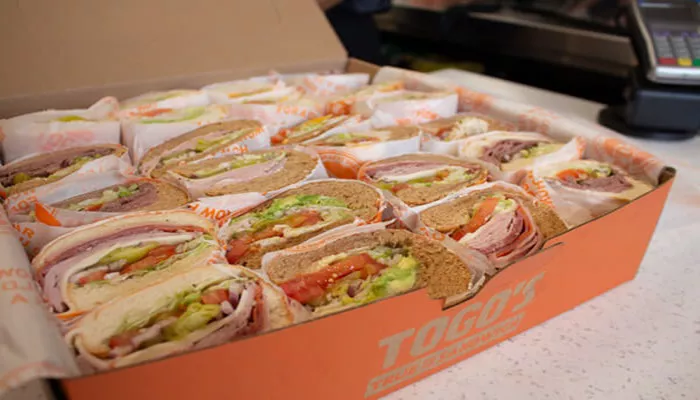Togo’s, a popular sandwich chain known for its fresh ingredients and generous portions, has become a go-to choice for many fast food enthusiasts. However, customers often find themselves questioning the high delivery fees associated with their orders. In this article, we’ll explore the factors contributing to Togo’s franchise high delivery charges, delving into operational costs, third-party delivery services, and the overall impact on customer experience and business profitability.
Togo’s Franchise Costs of Operational
Labor and Wages
One of the primary reasons for high delivery fees at Togo’s is the cost associated with labor. Delivering food requires additional staff or compensating existing employees for delivery tasks, which can be expensive. In many regions, minimum wage laws and labor regulations necessitate fair compensation, adding to the operational costs. Delivery drivers need to be paid for their time, and this cost is often passed on to the consumer in the form of delivery fees.
Vehicle Maintenance and Fuel
Another significant factor is the cost of maintaining delivery vehicles and fuel expenses. Regular maintenance, insurance, and fuel costs can add up quickly, especially with fluctuating gas prices. These expenses are crucial for ensuring that the delivery service is reliable and timely, contributing to the higher fees charged by Togo’s.
SEE ALSO: Is It Worth Buying A Togo’s Franchise?
Packaging and Safety Measures
Ensuring that food reaches customers in optimal condition requires proper packaging, which can be costly. High-quality packaging materials that keep the food fresh, warm, and presentable are essential. Additionally, in the current climate, implementing safety measures to protect both customers and delivery personnel adds another layer of cost. These measures, including sanitization and contactless delivery options, are necessary but expensive, contributing to the overall delivery fee.
Third-Party Delivery Services
Commission Fees
Togo’s franchise often partners with third-party delivery services like Uber Eats, DoorDash, and Grubhub to expand their delivery reach. While these services offer convenience and a broader customer base, they also charge significant commission fees, typically ranging from 15% to 30% per order. These fees can substantially cut into the profit margins of Togo’s, prompting the restaurant to pass some of these costs onto the customers through higher delivery fees.
Service Charges and Markups
In addition to commission fees, third-party services often add their own service charges and markups on menu items. These additional costs are outside of Togo’s control but contribute to the overall cost of delivery for the customer. The combined effect of commission fees and service charges can make the final delivery fee appear significantly higher than the initial price of the food.
Maintaining Quality And Service
Ensuring Freshness and Quality
Togo’s commitment to delivering high-quality food means that extra care is taken in the preparation and delivery process.
Maintaining the freshness and presentation of the food during transit can be challenging and requires investment in proper delivery practices and packaging. Ensuring that customers receive their food in the best possible condition is a priority that justifies the higher delivery fees.
Investment in Technology
To streamline the delivery process and enhance customer experience, Togo’s invests in advanced technology. This includes user-friendly apps and websites, GPS tracking for orders, and efficient order management systems. These technological investments improve the delivery service but come with substantial costs that contribute to the overall delivery fee.
Economic Factors
Inflation and Cost of Living
General economic conditions, such as inflation and the rising cost of living, also play a role in the high delivery fees. As the cost of goods, services, and wages increase, businesses like Togo’s must adjust their pricing to remain sustainable. These adjustments often reflect in delivery fees, as the company strives to balance profitability with customer satisfaction.
Market Competition
In a competitive market, maintaining a high standard of service and product quality is crucial. Togo’s franchise faces competition from other fast food and sandwich chains, many of which offer delivery services. To stay competitive, Togo’s must invest in their delivery infrastructure and service quality, which can drive up costs and, consequently, delivery fees.
Customer Experience And Business Sustainability
Balancing Costs and Customer Satisfaction
While high delivery fees can be a deterrent for some customers, Togo’s aims to balance these costs with the overall customer experience. By providing reliable, high-quality delivery service, Togo’s seeks to justify the higher fees and ensure customer satisfaction. The goal is to maintain a loyal customer base that appreciates the value of the service provided.
Promotions and Discounts
To mitigate the impact of high delivery fees, Togo’s franchise often offers promotions and discounts to their customers.
These promotions can include free delivery on orders above a certain amount, loyalty programs, or special deals through third-party delivery apps. These strategies help to offset the perceived high cost of delivery and encourage repeat business.
Conclusion
Understanding why Togo’s franchise charges so much for delivery involves looking at various factors, from operational costs and third-party service fees to quality assurance and economic conditions. While the delivery fees might seem high, they reflect the comprehensive efforts Togo’s franchise invests in ensuring that customers receive their orders promptly, safely, and in the best possible condition. Balancing these costs with customer satisfaction is a challenging yet essential aspect of maintaining a successful delivery service in the fast food industry. Through transparency and continuous improvement, Togo’s strives to offer value that justifies the delivery fees and enhances the overall customer experience.

